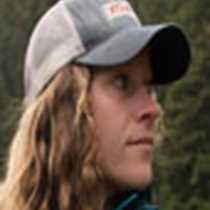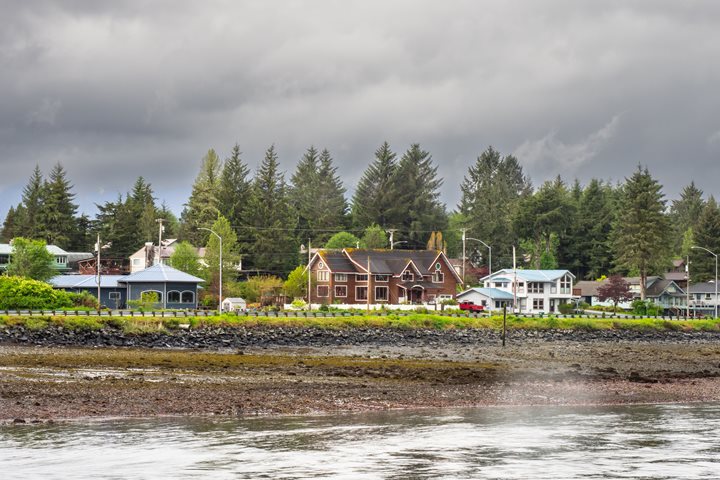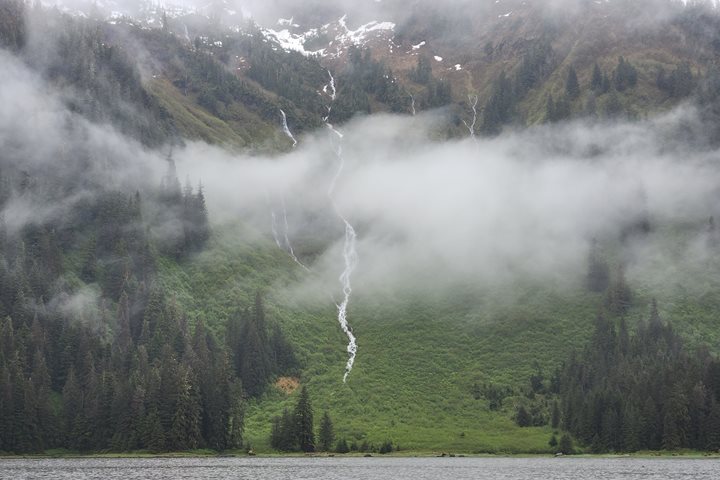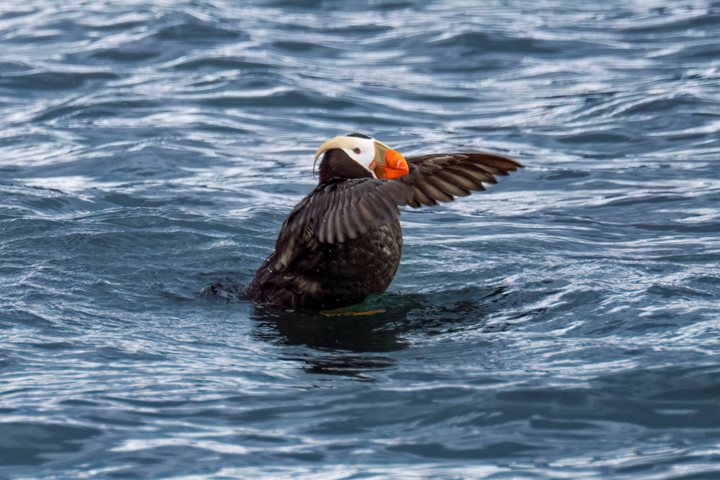The Inian Islands are a special place in Southeast Alaska. They border the open ocean just so, which provides a huge influx of life into the region. Since the tide swings roughly 20 feet from low to high, this huge volume of water ends up rushing through these bottlenecked channels and creates a very strong current through relatively small passageways. With this water comes plankton, fish, and other sea creatures that serve as food for the abundant wildlife in the Inians. A one-hour expedition landing craft cruise of the area will show off many animals, including Steller’s sea lions, sea otters, and tufted puffins.
Steller’s sea lions (also called northern sea lions) are the largest of the sea lion species. These huge animals can reach extreme sizes such as 2,400 pounds (for the males) and 1,000 pounds (for the females). They enjoy feasting on many types of fish and are able to hold their breath for up to 16 minutes. Sea otters are some of the feistiest marine mammals out there–and are unique in many ways. They are the only marine mammal that doesn’t have blubber to insulate themselves. In order to make up for this lack in fat they have the densest fur of any animal. Each square inch of pelt has 1,000,000 hairs! This super dense fur then fills up with the otters exhaled air as an extra buoyant layer for warmth at the surface, and the animal will keep that air in its fur for insulation as it makes a dive for food. These little creatures keep the kelp forest habitat in check–they eat the urchins that predate on kelp, which allows this underwater forest to flourish and the ecosystem to thrive. Tufted puffins are remarkable birds. They have the ability to dive very deep into the water searching for the fish and krill they eat, and are even able to use their wings as “fins” underwater. They fly low over the water and burrow into the ground to nest. With their yellow eyebrows and large orange beaks they are quite the special site to see; a favorite among the birdwatching community.
The Inian Islands make up a unique section of Southeast Alaska. They house many exciting and important animals, building a community which all guests on National Geographic Sea Bird enjoyed viewing on this lovely day.









